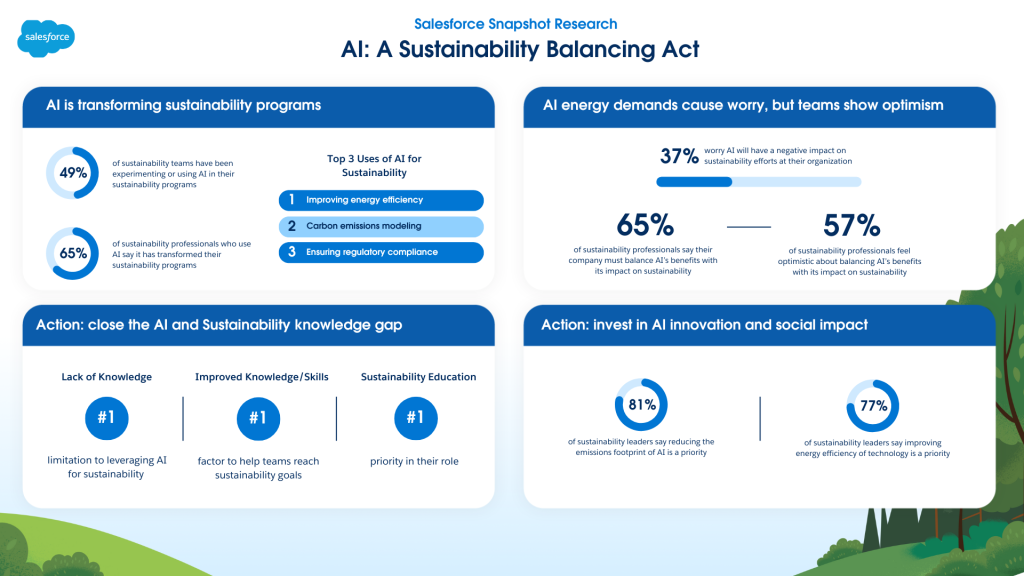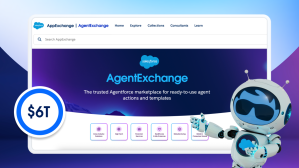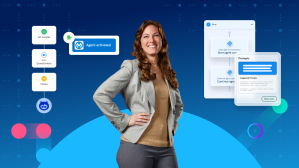A recent survey of nearly 500 sustainability professionals found that while almost 4 in 10 worry about AI’s potential negative impacts on sustainability efforts at their organization, even more (57%) are optimistic that they can balance the negative impact with AI’s benefits.
Why it matters: AI-driven data center power usage could double by 2026 — putting efforts to reduce corporate carbon emissions at risk. As a result, sustainability teams around the world are grappling with the challenge of how to help their companies implement this groundbreaking technology without hurting the environment. Fortunately, there’s evidence that AI can aid supply chain management, ESG reporting, and do more to help businesses combat the climate crisis — and Salesforce’s new research suggests that companies are already managing this balancing act.
Salesforce Snapshot Research
AI: A Sustainability Balancing Act. Uncover insights from nearly 500 sustainability professionals on how they manage AI’s sustainability balancing act.
The research found:
Over 6 in 10 sustainability professionals say their company must balance AI’s benefits with its environmental costs, but remain hopeful about solutions
- Nearly 4 in 10 sustainability professionals worry AI will have a negative impact on sustainability efforts at their organization.
- 58% of sustainability professionals believe the benefits of AI will outweigh its risks when solving the climate crisis.
- 57% of sustainability professionals feel optimistic about balancing AI’s benefits with its impact on sustainability.
- 55% of sustainability professionals believe AI’s impact on global sustainability progress will be net positive.
AI is beginning to transform sustainability programs
- Nearly half of sustainability professionals have begun using or experimenting with AI in their sustainability programs.
- 20% of sustainability professionals have fully implemented AI into their sustainability initiatives.
- 29% are still experimenting with AI in their sustainability initiatives.
- The top ways sustainability teams are using AI for sustainability include:
- Improving energy efficiency (50%) (i.e., monitoring energy consumption, predicting when energy use is high, and optimizing energy distribution)
- Carbon emissions modeling (48%) (i.e., identifying the areas of a product’s life cycle that have the greatest negative environmental impacts)
- Ensuring compliance with environmental standards and regulations (47%) (i.e., ISO standards, emissions reduction regulations, and so on)
The AI and sustainability knowledge gap is the #1 limitation and #1 priority for sustainability teams
- The #1 limitation to leveraging AI for sustainability efforts, according to respondents, is a lack of knowledge about how AI can be used for sustainability.
- 79% of sustainability professionals say educating others on sustainable practices is a priority in their role, and 42% say it’s a high priority – higher than any other effort.
By implementing education and training programs, businesses can reach their sustainability goals
- The #1 factor that would help teams better reach sustainability goals is improved knowledge/skills (52%) and #2 is training (45%).
“Sustainability and AI education and training not only narrows the gap between businesses and their climate goals, but also helps create a culture of learning and innovation,” said Suzanne DiBianca, EVP and Chief Impact Officer, Salesforce.
Businesses can invest in innovation and social impact to reduce the environmental impact of AI
- 81% of sustainability leaders say reducing the emissions footprint of AI is a priority.
- Nearly one-third of sustainability leaders say reducing the emissions footprint of AI is a high priority.
- 77% of sustainability leaders say that improving energy efficiency of technology is a priority.
What businesses can do: According to DiBianca, companies can ensure that the benefits of AI are universal to all of their stakeholders, including the planet, by:
- Driving innovation and transparency: Companies can leverage AI to develop solutions that reduce environmental impact, such as optimizing energy consumption and improving supply chain efficiency. Additionally, they can foster transparency by publicly sharing their sustainability metrics and progress.
- Supporting policy advocacy and philanthropic initiatives: Businesses can support nonprofits who are driving climate solutions with AI, and advocate for policies that can help minimize the environmental impact of AI and foster innovation.
- Making sustainability core to the business: Companies can operationalize sustainability across their business and allocate resources as they would any other segment of the business.
Go deeper: “Investing in innovation and the social impact of AI is crucial for reducing the carbon footprint of AI tools and ensuring the technology benefits everyone equitably,” said Boris Gamazaychikov, Senior Manager of Emissions Reduction, Salesforce. “At Salesforce, we employ a comprehensive approach, leveraging our corporate philanthropy, strategic investments, and cutting-edge technology to drive sustainability in AI.”
Read more:
- Begin a sustainability AI learning journey on Trailhead: Salesforce Sustainable AI Blueprint: Quick Look
- Learn more in an interview with Boris Gamazaychikov: Sustainable AI: Balancing Innovation with Environmental Responsibility
- Dive into Salesforce’s Sustainable AI Policy Principles
- Read about the Salesforce Accelerator — AI for Climate Action
- Read how Net Zero Cloud uses AI to innovate ESG reporting
Methodology: Salesforce conducted a double-anonymous survey in partnership with YouGov from June 5-10, 2024. It included 452 sustainability professionals (including 384 sustainability leaders) representing companies of a variety of sizes and sectors in three countries, including the United States, the United Kingdom, and Canada. The survey took place online.
















